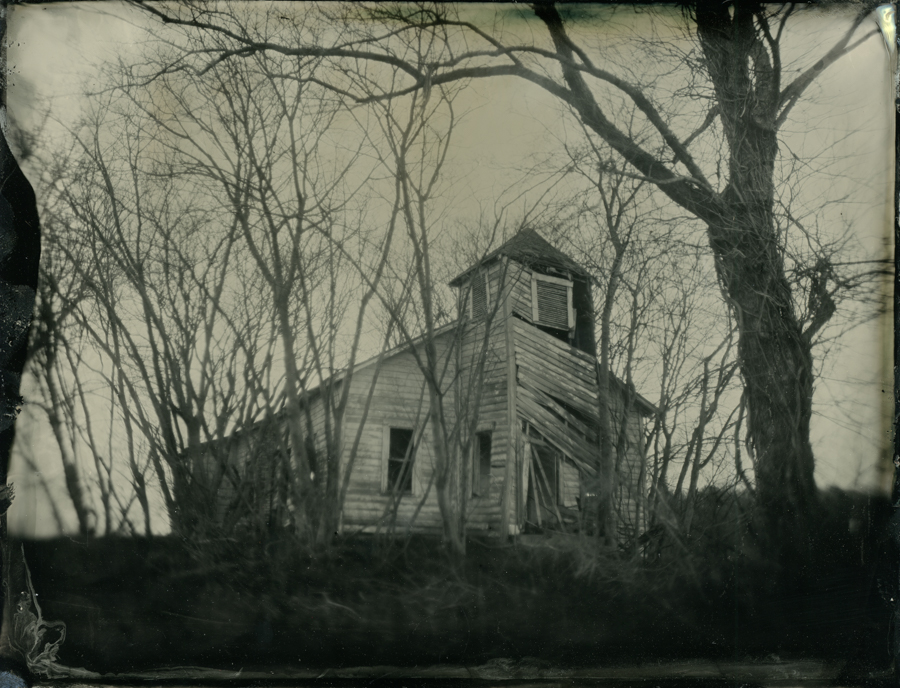Photographer and Mississippi native Michael Foster discovered tintypes during a workshop six years ago in the wilds of the Delta. Something about the silvery, old-time images spoke to him. “It took me a year, after doing a lot of reading, to work up the nerve to try,” Foster says, “and I’ve been learning ever since.”
The method, invented in mid-1800s, involves creating a light-sensitive layer on a plate of glass or metal, then developing it in a darkroom. When the process is done on metal (originally tin, thus the name; now aluminum), it’s called a tintype. When it’s done on glass, it’s called an ambrotype. “I’m drawn to them because the images take on a dark and moody quality,” Foster says. “I also love the technique because it forces me to slow down. I may spend a whole afternoon and only make three or four images.”

Photo: Michael Foster
Mt. Tinna Missionary Baptist Church in Scott, Mississippi.
For Foster, the subjects are endless, from portraits to haunting images of old buildings and landscapes lost to time. And in addition to selling his work on his website and through a few galleries, he is also a one-man traveling tintype show. “Most of the portraits I’ve done have been at galleries or festivals,” he says. But he’s also traveled to weddings and parties, bringing along his darkroom in the form of a 5-x-8 covered trailer where folks can walk up and have their tintype portrait developed on the spot.

Photo: Michael Foster
A wedding portrait by Foster.
And his clients don’t mind the roughly 45-minute start-to-finish process. Using an antiquated form in a contemporary digital world has its charms. “Watching the image come to life is the closest thing to magic I’ve ever seen,” Foster says. “Sometimes it’s nice to do things the hard way.”








